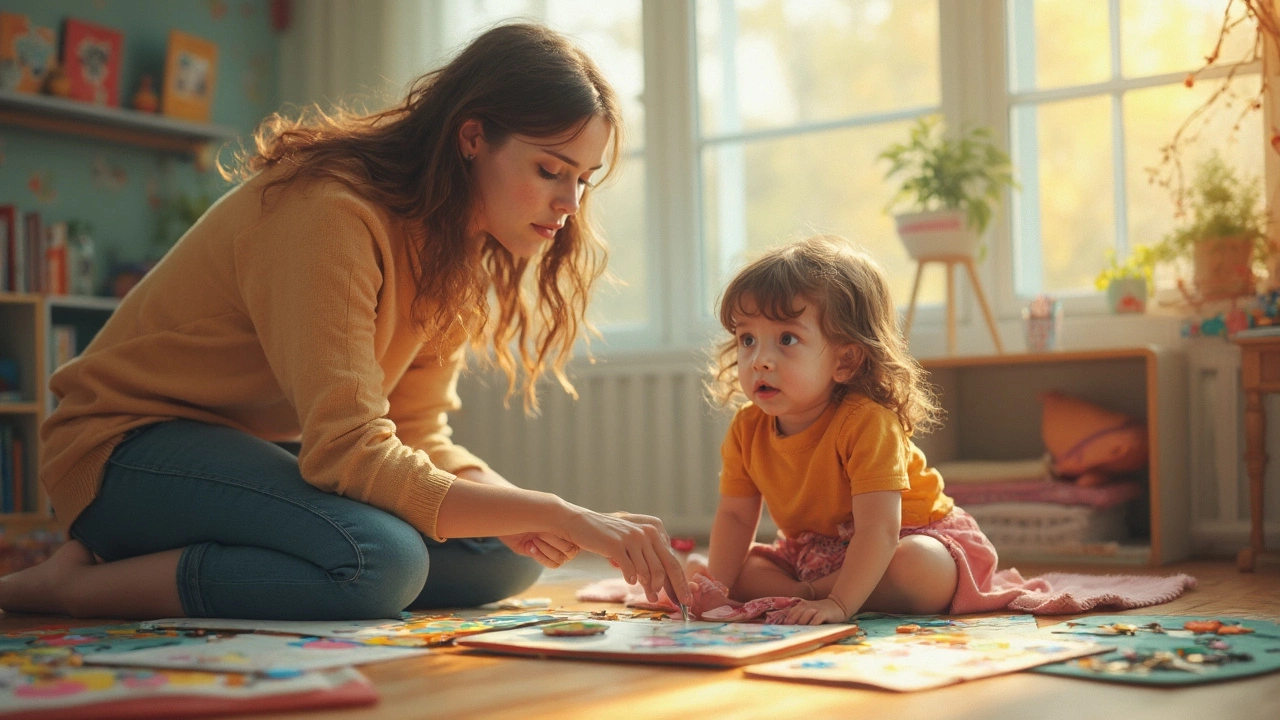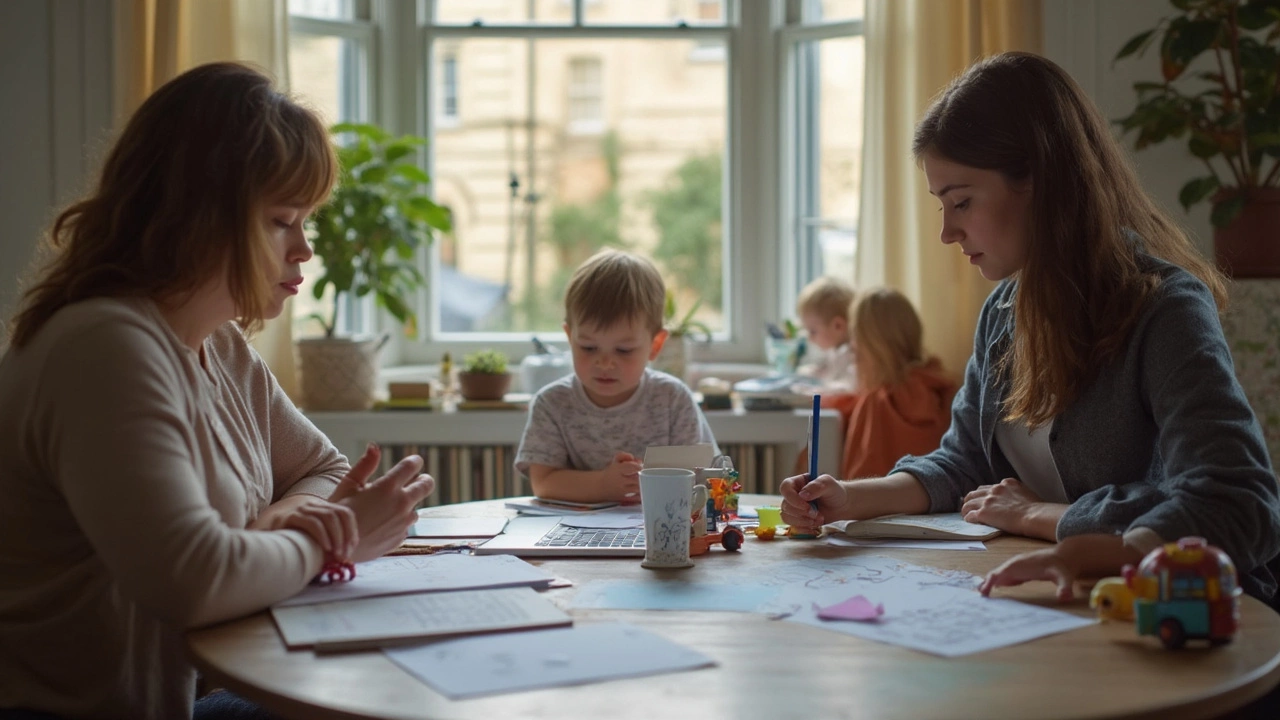-
12
- 0

Managing Special Needs in Education: Practical Steps for Success
Creating a nurturing environment for children with special needs starts with understanding their unique challenges. Every child is different, and there’s no one-size-fits-all approach. One interesting thing to note is how individualized education plans (IEPs) can make a huge difference. They are like roadmaps, helping teachers and parents cater to specific learning needs and developmental goals.
Effective teaching strategies often involve breaking down tasks into smaller, manageable steps. This helps students focus on one thing at a time, reducing overwhelm and boosting confidence. In practice, adapting lesson plans to suit different learning styles—whether visual, auditory, or kinesthetic—can engage and motivate students more effectively.
Another key tip is creating a supportive and inclusive classroom environment. Encouraging peer interaction and promoting social skills can foster a sense of belonging. Simple activities that involve group work or buddy systems often help in creating bonds among students, making the learning experience richer and more enjoyable.
- Understanding Individual Needs
- Effective Teaching Strategies
- Building a Supportive Environment
- Collaboration with Parents and Specialists
- Incorporating Technology and Resources
Understanding Individual Needs
Every child with special needs is unique, and this uniqueness is at the heart of effective special needs education. By understanding individual differences, educators and parents can tailor their approaches to best support each child's development and learning.
Observation and Assessment
The first step in understanding a child's needs is through observation. Pay close attention to how they interact, what challenges they face, and their interests. Regular assessments can provide a clear picture of their strengths and areas where they might need more support.
Assessments can include both formal tools like standardized tests and informal methods like classroom observations and parental input. By gathering comprehensive data, you can map out a child's specific needs and abilities. This collaboration is a cornerstone of developing individualized education plans (IEPs).
Individualized Education Plans (IEPs)
IEPs are personalized to meet the unique needs of students, offering them the best chance for success. These plans set specific, measurable goals and outline the strategies and resources that will help the child achieve them. They are living documents, always subject to review and adjustment as children grow and circumstances evolve.
Need some tips for IEP meetings? Engage actively with teachers and specialists. Share your insights and ask questions. Remember, this is a team effort to ensure a supportive learning journey for the child.
Sensitivity to Sensory Needs
Many children with disabilities have unique sensory needs, and being mindful of these is crucial. Classrooms can be busy, sometimes chaotic places, so finding ways to reduce sensory overload is important. Consider using noise-cancelling headphones, quiet corners, or calming visuals to help students focus.
A study showed nearly 70% of kids with autism spectrum disorder experience sensory processing issues. Recognizing these and adapting the environment accordingly makes a massive difference in their ability to learn and thrive.
Highlight the Positives
Remember the mantra: focus on strengths, not deficits. Building on what a child can do often leads to more confidence and better learning outcomes. Celebrate successes, no matter how small they seem. Every step forward matters.
In the end, understanding individual needs is about seeing the child as a whole person and acknowledging their potential. With attention, care, and the right information, children with special needs can truly shine.
Effective Teaching Strategies
Diving into the world of special needs education requires teachers to be both creative and adaptable. One of the most beneficial strategies is differentiated instruction. This approach means tailoring teaching styles to meet diverse learning needs within the classroom. It’s not about creating separate lessons but rather adjusting content, process, and products based on students' abilities.
Using Multi-Sensory Techniques
The more senses you involve, the better the child understands and retains information. Multi-sensory learning incorporates visual aids, tactile experiences, and auditory elements. For example, combining storytelling with drawing or singing can be particularly effective, especially for children with autism or ADHD.
Incorporating Visual Supports
Many children with disabilities benefit immensely from visual supports like picture schedules, charts, and diagrams. These tools help students grasp concepts quickly and remember routines without anxiety. Visual supports can be as simple as a daily schedule pictogram on the wall or flashcards with vocabulary words.
Structured and Predictable Environment
Stability is key. Providing a structured and predictable routine helps students feel secure. Regular routines reduce stress and help children with disabilities focus better. This doesn’t mean the classroom should be rigid—there’s always room for fun!—but having a consistent schedule promotes understanding and cooperation.
Positive Reinforcement
Effective teaching is also about encouraging positive behavior. Celebrating small victories with praise or rewards like stickers can boost confidence and motivation. This not only strengthens the desired behavior but also builds a trusting relationship between the teacher and the student.
Adaptive Technology
In today's digital age, technology can play a pivotal role. Tools like speech-to-text software, interactive whiteboards, and specialized apps make learning more accessible and engaging. These resources are particularly beneficial for children with physical disabilities or learning challenges. For instance, an iPad app might allow a student with dyslexia to read text through auditory narration, enhancing comprehension.
| Technology | Purpose |
|---|---|
| Speech-to-text | Assists students with writing difficulties |
| Interactive Whiteboards | Fosters engagement through visual and tactile interaction |
| Educational Apps | Customizes learning experiences to individual needs |
Ultimately, every child deserves an education that recognizes their potential and supports their journey. By using effective teaching strategies, educators can create a more inclusive and productive environment, paving the way for every child's success.

Building a Supportive Environment
When it comes to creating a supportive environment for children with special needs, the classroom's atmosphere can have a massive impact on learning. The goal is to promote inclusion and understanding, and there are several ways to achieve this. Let's dive into some practical steps you can take.
Physical Space Arrangement
First up is making sure the physical environment suits all students. This means ensuring that any mobility needs are met, perhaps by arranging desks to allow easy wheelchair access or creating cozy nooks for students who may need a quiet space to focus. Small tweaks in the classroom layout can really help.
Creating a Positive Culture
Encouraging a positive classroom culture is crucial. Teachers can set the tone by promoting kindness and patience. Simple activities, such as “kindness circles” where students share positive comments about each other, can cultivate a supportive group dynamic. It's about creating that feeling of being part of a team.
Encouraging Peer Support
Harnessing the power of peer relationships can significantly aid special education. Sometimes, kids learn better from each other than from adults. Establishing buddy systems or group projects can encourage students to support and learn from one another, developing social skills and empathy along the way.
Utilizing Visual Aids and Routines
Utilizing visual aids can make a huge difference too. Charts, picture schedules, and visual timers help students understand their routines better. This is particularly helpful for children who thrive on structure and predictability.
| Special Needs | Typical Challenges | Supportive Solution |
|---|---|---|
| ADHD | Difficulty in focusing | Use fidget tools, allow movement breaks |
| Autism | Challenges with social interaction | Implement social stories and peer buddy systems |
Remember, fostering such an inclusive environment doesn't just benefit those with special needs. It creates a richer, more empathetic community for all students, helping everyone thrive together.
Collaboration with Parents and Specialists
When it comes to special needs education, teaming up with parents and specialists is unbelievably important. This dynamic trio can create a well-rounded support system for the kids. Why? Because each brings unique insights and skills to the table.
Open Communication is Key
First off, keep the lines of communication open between teachers, parents, and the specialist. Regular meetings and updates can make a big difference. Be it in person, via email, or through video calls, discussing any progress or concerns early on can help everyone stay on the same page.
Setting Common Goals
Try to develop and agree on shared goals for the child's development. Once everyone's clear on what they're working towards, it's easier to map out practical steps.**Special needs education** often requires adapting strategies, and having clear goals can make adjustments smoother.
Leveraging Professional Expertise
Specialists, like occupational therapists and speech-language pathologists, can offer expert advice on techniques and resources that might be beneficial. For instance, incorporating a specialist’s recommended activities into daily routines can reinforce learning and skill-building.
- Occupational therapists might suggest fine-motor skills activities to include during play.
- Speech-language pathologists could provide exercises to improve communication skills.
Supporting parents with information and resources to continue these practices at home ensures consistency and smooth progress.
The Role of Technology
Technology can be a bridge too! Platforms dedicated to children with disabilities offer countless tools for tailored learning experiences and simplified updates. For example, there are apps for tracking developmental milestones and sharing them with everyone involved instantly.
Collaboration works best when all parties feel like valued team members, actively contributing to the child's educational journey. With clear communication, agreed-upon goals, and the right mix of professional insights, these kids can have the supportive learning environment they deserve.

Incorporating Technology and Resources
Technology can be a game changer in special needs education. With the right tools, students can enhance their learning experiences, making education more accessible and fun. Let's look at how technology and resources can make a difference.
First off, devices like tablets and laptops are becoming staples in classrooms. They're not just for playing games; they offer a range of inclusive teaching tools. Apps designed for children with disabilities help improve communication skills, such as speech-to-text programs for kids who struggle with writing.
Assistive Technology
Not all tech tools are high-tech. For instance, screen magnifiers and text readers can be invaluable for students with visual impairments. Digital books and audiobooks also provide alternative ways of accessing information, making it easier for students to keep up with the curriculum.
Online Resources and Apps
Then there are the rich online resources. Websites like Khan Academy offer free educational content that can be adapted for individual needs. Plus, programs like Google Classroom enable teachers to upload lesson plans and materials that can be accessed anytime, giving students the flexibility to learn at their own pace.
- Speech therapy apps: Tools like Articulation Station help kids practice speech sounds and improve their language skills.
- Sensory apps: Apps like Sensory Room can simulate calming environments, aiding students with sensory processing challenges.
- Organization apps: Tools like Todoist help students manage tasks and develop organizational skills, crucial for learning.
Integrating these resources not only supports learning but also boosts confidence among students with special needs. The key is selecting tools that align with each child's educational goals and abilities.
Write a comment
Tags Weight
- education
- study tips
- adult education
- exam preparation
- online courses
- adult learning
- lifelong learning
- distance learning
- GCSE revision
- online education
- private tutoring
- special needs education
- scholarships
- remote learning
- scholarship tips
- financial aid
- international students
- effective learning
- e-learning
- education funding

Written by Elara Winslow
View all posts by: Elara Winslow